The 5 Most Beautiful Outer Banks Lighthouses
The Outer Banks is a 100-mile stretch of island coastline spotted with small, seaside towns and ideal opportunities for camping, sightseeing, and spending time outdoors. These islands are the site of some foundational American history as well. The first colony in America was founded in Roanoke, and the Wright Brothers staged their first flight in Kitty Hawk, on December 17th, 1903. The Outer Banks is also home to a host of beautiful lighthouses, so if you’re planning a visit then read on to discover the five most beautiful lighthouses of the Outer Banks!
1. Cape Hatteras Lighthouse
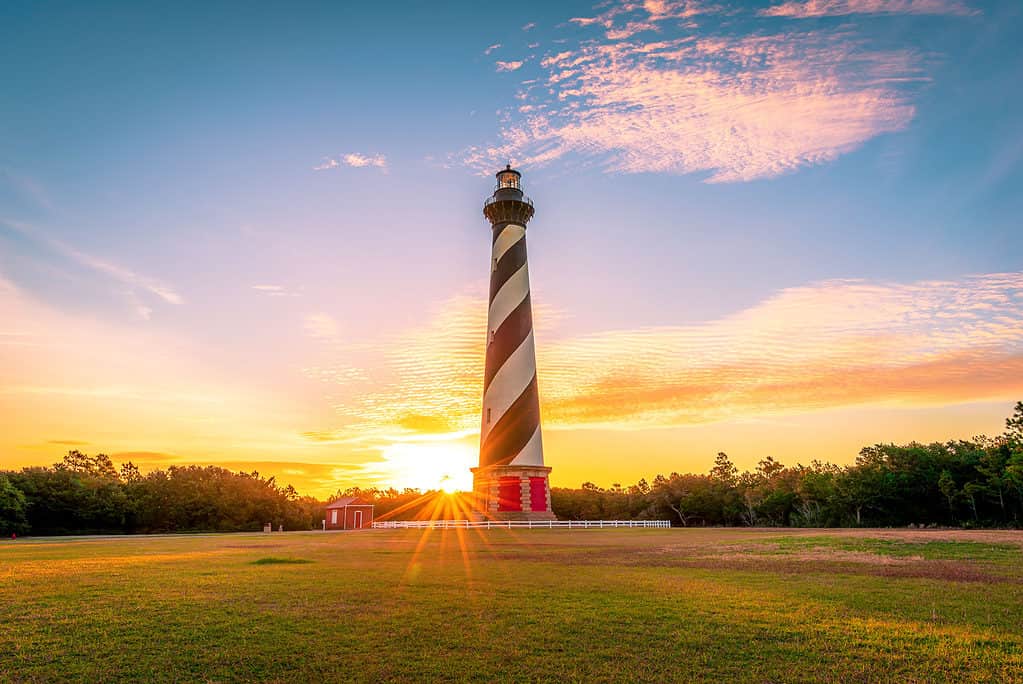
©Chansak Joe/Shutterstock.com
The Cape Hatteras Lighthouse is not only the tallest brick lighthouse in the world (at 208 feet tall) but it is also one of the most well-known lighthouses due to its unique black and white striped design.
There have been a total of three lighthouses built in Buxton on Hatteras Island since the first tower was constructed in 1803. The construction of the lighthouse that stands today was a response to extensive structural damage from the Civil War of 1861. The Cape Hatteras Lighthouse was rebuilt in 1870, three years after United States Congress approved $155,000 for the process. On Dec 16th, 1870 the tower’s first-order Fresnel lens was lit and helped provide a powerful beam of light over the dangerous shores of North Carolina’s Outer Banks.
At the time it was erected the base of the tower was initially 1,600 feet away from the shoreline. Over the years, erosion took its toll and by 1930 the sea was only 150 feet from the Cape Hatteras Lighthouse. By the 1990s the need for a solution to this problem had become dire, and the National Park Service and the National Academy of Sciences teamed up to move the lighthouse inland by 1,600 feet. This was accomplished by the International Chimney Corporation in 1999, which successfully transported the 4,800-ton lighthouse to safety.
Those who wish to visit the Cape Hatteras Lighthouse are welcome any time of the year except Christmas Day, December 25th. It is open to the public from 9 am to 5 pm year-round, and from 9 am to 6 pm during the summer.
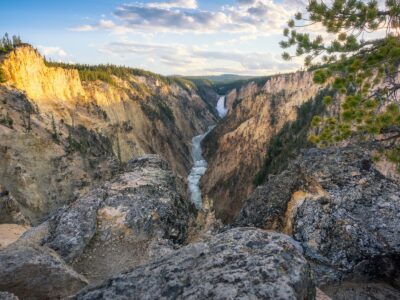
2. Roanoke Marshes Lighthouse

©Wileydoc/Shutterstock.com
The Roanoke Marshes Lighthouse lies at the end of a 40-yard wooden boardwalk in downtown Manteo, a quiet and charming town in the Outer Banks. It is the last of four lighthouses to bear the name and is technically considered to be a replica since its functioning predecessors stood at the southern tip of the Croatan Sound where their light could be properly useful.
The initial Roanoke Marshes Lighthouse was built in 1831 and only operated for eight years before falling into disrepair. In 1857 a second structure was built which included living quarters big enough for a lighthouse keeper and one assistant, as well as a lantern room. United States Congress was able to fund the construction with $10,000, and on April 15th of 1858, it was fully operating with a fourth-order Fresnel lens.
Following a brief period of inactivity during the Civil War the Roanoke Marshes Lighthouse resumed its duties in 1863. A decade later, the tower had fallen victim to the slow wash of erosion that had washed away the land around it, and United States Congress approved a budget of $15,000 for the construction of a third lighthouse.
This iteration of the Roanoke Marshes Lighthouse was completed by November of 1877 and operated until the United States Coast Guard decommissioned the lighthouse in 1955. The town of Manteo had plans to buy the lighthouse but before they could act it was purchased by Elijah Tate, who had the structure moved onto a barge in order to transport it. The sea conditions on the day of its shipment were rough enough to send the lighthouse teetering into the ocean, and it was subsequently estimated to be too dangerous to retrieve it from the depths.
In 1999, Manteo began work on a replica of the Roanoke Marshes Lighthouse to help celebrate their centennial. Multiple complications including fundraising issues, Hurricane Isabel, and protestations by the United States Army Corps of Engineers all delayed the process until it 2004, when it was completed on September 25th. It is operated by the Roanoke Island Maritime Museum and is open to the public Tuesday through Saturday from 9 am to 5 pm, except in the wintertime.
3. Currituck Beach Lighthouse
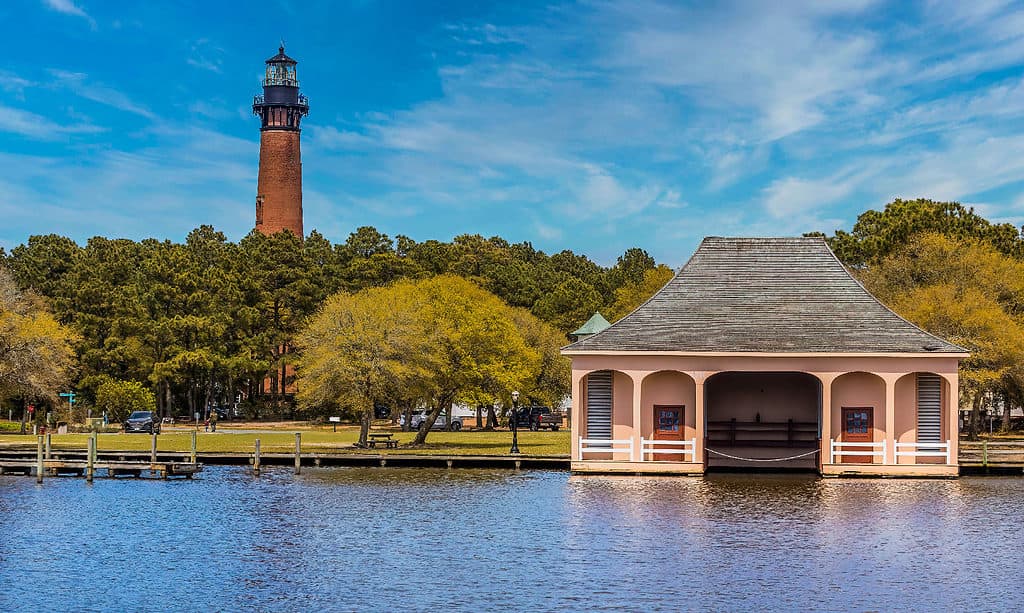
©Jason Schronce/Shutterstock.com
The Currituck Beach Lighthouse is distinct from many of its Outer Banks counterparts in that the entire structure is made of exposed brick. The tower stands 162 feet tall and is located close to the grounds of the Whalehead, a historic mansion in Corolla, North Carolina, where it still helps ships at sea.
The northern shoreline of the Outer Banks is notoriously dangerous for passing vessels, and after hundreds of shipwrecks across the centuries prompted the locals to act, construction finally began on a lighthouse in 1872. After three years of laboring the Currituck Beach Lighthouse was finished on December 1st, 1875, helping to illuminate the last unlit section of the North Carolina coastline between the Bodie Island lighthouse and the Cape Henry Lighthouse.
It was fitted with a First Order Fresnel light (the biggest of its kind) which projected out across the ocean for 18 miles to guide captains and their boats through the treacherous waters at night. The Currituck Beach Lighthouse is one of the only towers in North America that has retained its original Fresnel lens.
A year after the completion of the tower, the villagers of Corolla decided to build a keeper’s quarters big enough for one lighthouse keeper, two assistants, and their families. In 1933 the tower and the keeper’s building received electricity, and by the end of the decade, the light was automated. Throughout the next forty years, the premises sat in neglect, and in 1980 the state of North Carolina began a restoration process with the help of the Outer Banks Conservationists.
Today the Currituck Beach Lighthouse is open to visitors, with fully operating grounds that house a gift shop, museum exhibits, and information centers. Committed tourists can climb the 220 steps needed to summit the tower, and will be greeted with a one-of-a-kind view of the Currituck Sound.
4. Bodie Island Lighthouse
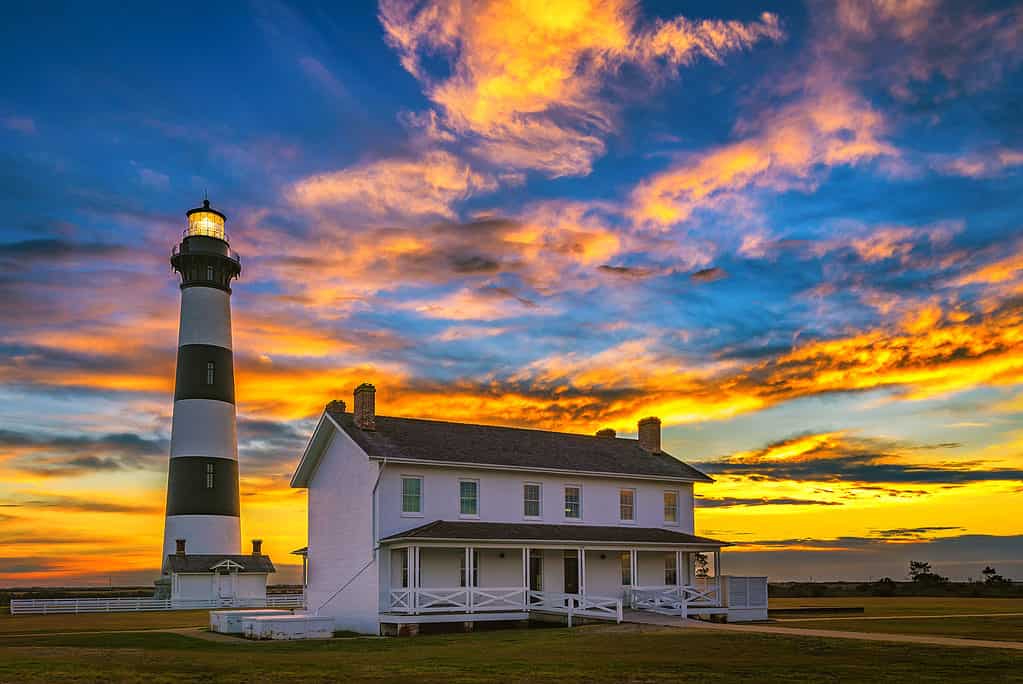
©anthony heflin/Shutterstock.com
The Bodie Island Lighthouse is famous for its black and white stripes and commanding height, a full 156 feet tall. It was commissioned in 1837 after Congress and the Bodie Island locals realized this stretch of coastline, nicknamed the “Graveyard of the Atlantic” was in dire need of a lighthouse to make the waters safer.
United States Congress members approved a budget of $5,000 for the construction of a lighthouse that was originally meant to be built on Pea Island. Upon reviewing the case it was determined that since more than 40 ships had been wrecked in the territory near Bodie Island in the last decade alone, it would be better to build the lighthouse there instead. It also had the added benefit of being an easier access point for the transport of building materials necessary for the process.
Unfortunately, the erection of a lighthouse on Bodie Island was delayed for another ten years. First, there was trouble purchasing the land it was to be built on, and then the Auditor of the Treasury blocked nearly every attempt to acquire quality materials for its construction. By 1847 the first tower on Bodie Island had been completed, but the instructions and recommendations of the initial engineer had been routinely ignored.
Despite the quality fourth-order Fresnel lens it housed, the lighthouse was condemned by 1854. A second lighthouse was constructed in 1858, but it was captured by soldiers of the Confederate Army only two years later during the outburst of the American Civil War, and subsequently destroyed in the fighting.
By 1871 a third and final lighthouse was planned and a first-order Fresnel lens was ordered for the tower. It was built, along with a duplex for the lighthouse keeper, on 15 acres of land a little further inland. The following year the Fresnel lens had arrived, construction was complete, and the Bodie Island Lighthouse that we know today was shining its beam 19 miles over the shoreline of North Carolina. The tower was automated in 1932, the same year that it received electric power.
In 1953 the National Park Service assumed control of the Bodie Island Lighthouse and its adjacent keeper’s quarters. With their help, the latter has undergone two extensive renovations and now functions as a visitors center. The lighthouse itself was last renovated in 2013 and is open for tourists to visit if they can brave the 214 steps to the top.
5. Ocracoke Island Lighthouse
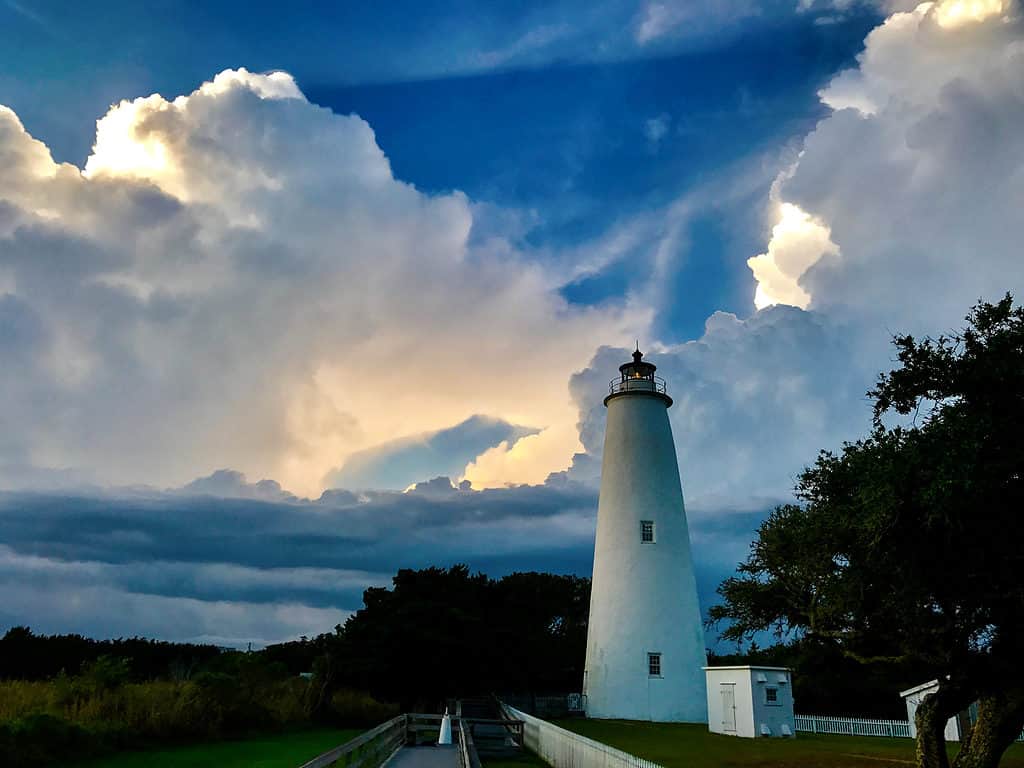
©ButtermilkgirlVirginia/Shutterstock.com
The Ocracoke Island Lighthouse is the oldest lighthouse to still be operating in North Carolina, and the second oldest lighthouse in the country. The island itself was discovered by settlers from England when their ship sank off of its shores in 1585. After nearly 200 years of development, it became one of the most prosperous and commonly traveled inlets on the east coast of the United States of America.
Over time, the United States Lighthouse Service realized that a lighthouse would need to be built to help sailors navigate the tricky waters around the Ocracoke Inlet. Initially, the location was not Ocracoke Island but Shell Castle Island, a small 25-acre island just to the south. It took four years of construction, but the lighthouse only operated for two decades before a receding shoreline and a lightning storm destroyed both the tower and the keeper’s quarters in 1818.
Realizing the necessity of a replacement tower for the area, the United States government moved to acquire two acres of Ocracoke Island for $50 in 1822. The 65-foot tall tower and a one-story keeper’s quarters were constructed in 1823 on the southern tip of the island, built by Noah Porter of Massachusetts.
In 1854, a fourth-order Fresnel lens arrived as an update to the prior reflection system, before the lighthouse was unofficially decommissioned during the American Civil War. Union soldiers restored the Fresnel lens to its proper place in 1864. An extra assistant keeper’s quarters were added in 1897 and expanded upon in 1929. After receiving electricity in 1936, the Ocracoke Island Lighthouse beam was able to project out 14 miles over the sea.
In 1955 the lighthouse was automated and in 1999 the United States Coast Guard transferred control to the National Parks Service. The tower still operates today, as the waters around the Ocracoke Island inlet remain perilous to navigate. While the lighthouse itself is not open to the public, the grounds are open to visitors and can be accessed via a 40-minute ferry ride from either Hatteras Island or North Carolina.